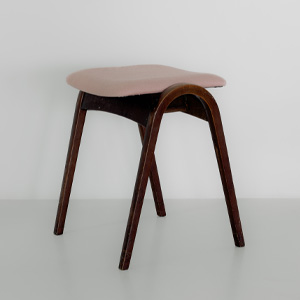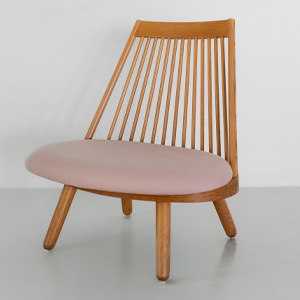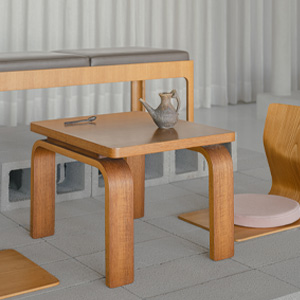Side Gallery
Side Gallery
WishlistFollow
Follow
JAPANESE DESIGN
BARCELONA
SIDE GALLERY
14 NOV 2025 - 18 MAR 2026
In the decades following World War II, Japan underwent a profound transformation. The rapid economic growth of the 1960s—often called the “Japanese Economic Miracle”—brought modernization, urbanization, and a growing middle class eager to embrace new ways of living. This period was marked by a national effort to rebuild not only the economy and infrastructure but also Japan’s cultural and aesthetic identity within a modern, global context. Design became a vital expression of this renewal, balancing technological progress with a deep respect for craft and tradition.
In this era, furniture design was not merely about functionality or style—it represented a broader cultural project. Japanese designers sought to reconcile the nation’s ancient traditions of woodcraft, minimalism, and spatial harmony with the forward-looking optimism of an industrial society. Through this process, they articulated a modern identity that was uniquely Japanese yet globally resonant, expressing the idea that modernity need not abandon tradition, but rather evolve from it.
Within this dynamic environment, Japanese furniture design flourished as a bridge between the old and the new. Designers such as Isamu Kenmochi, Junzo Sakakura, Daisaku Choh, Riki Watanabe, Ubunji Kidokoro, or Katsuo Matsumura redefined the domestic landscape through objects that reflected both modern sensibilities and Japanese cultural values. Their work was shaped by the encounter between Western modernism ideas—introduced through contact with European and American design movements—and the principles of mingei, or folk craft, which celebrated the beauty of everyday, handcrafted objects. This synthesis generated a distinctly Japanese form of modernism: one that valued structure over ornament, simplicity over decoration, tactility over spectacle, and the poetic balance between nature and technology.



Manufacturers such as Tendo Mokko played a crucial role in bringing these ideas to life. Founded in 1940 in Tendo, Yamagata Prefecture, the company became one of the most important forces in the postwar Japanese design landscape. During the 1950s and 1960s, Tendo Mokko distinguished itself through pioneering work with molded plywood—a material that symbolized both technological innovation and a new aesthetic sensitivity. The company’s technical excellence lay in its ability to bend and laminate thin layers of wood into organic shapes, achieving both strength and flexibility. This process allowed for the creation of seamless curves and smooth silhouettes that echoed the natural forms found in traditional Japanese art and architecture.
By the 1970s, Japanese modern furniture had established a unique identity—elegant yet functional, minimalist yet emotional. It reflected a society confidently merging its artisanal heritage with the possibilities of modern industry. The works of designers such as Kenmochi, Sakakura or Choh, along with the production mastery of Tendo Mokko, not only defined a golden era of Japanese design but also shaped international perceptions of Japan as a nation where modernity and tradition coexist in perfect balance.
By reintroducing these works in the contemporary context, Side Gallery invites a renewed appreciation for a design ethos that remains profoundly relevant today: one that understands simplicity as complexity distilled, and functionality as cultural expression.